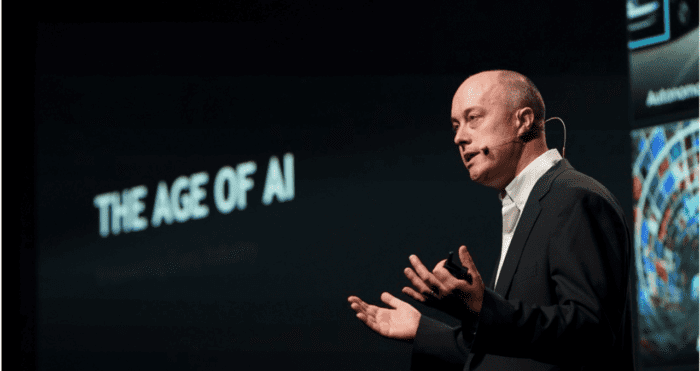NVIDIA VP for Accelerated Computing Ian Buck unveiled the graphics processing unit (GPU) provider's new open-source platform, RAPIDS, which promises major potential for accelerating the ability for data scientists to incorporate neural networks and machine learning into data analytics platforms.
Buck unveiled RAPIDS as part of an hour-long opening keynote during NVIDIA's GPU Technology Conference (GTC) at the Ronald Reagan Building in Washington D.C. this week. NVIDIA has been hosting GTCs throughout 2018 to explain how artificial intelligence, machine learning and other embedded computing processing concepts can be applied in innovative new ways to new industries. Washington D.C. comes after GTCs in Europe, Israel and Japan, with the final one of the year scheduled for China next month.
RAPIDS is NVIDIA's new open-source software that serves as a GPU-acceleration platform to give companies ability to analyze massive amounts of data and make accurate business predictions at unprecedented speed. NVIDIA developed the software as a suite of open-source libraries for GPU-accelerated analytics, machine learning and eventually data-visualization purposes. A GPU is a programmable and powerful computational device with hundreds of cores that can rapidly manipulate memory to create images in a frame buffer intended for output to a display device, according to NVIDIA.
The RAPIDS platform was developed by NVIDIA's GPU software development engineers in combination with open source software data science library providers such as the Apache Arrow and Python. Buck demonstrated one use case that showed the advanced computer processing power of RAPIDS.
The NVIDIA executive used RAPIDS to analyze and visualize the financial performance of more than 145 million mortgages across the United States between 2006 and 2018 to highlight regions where mortgages are most at risk.
"If you tried to do this workload on a CPU, on 20 CPU servers it would take almost two hours just to get the data into memory and pre-filter it. On a GPU system, this takes less than a minute," said Buck. "Then to train the gradient-boosted decision tree on 20 CPU nodes, its almost another hour. On a GPU, we can do in about three minutes."
Buck believes the platform can bring the same type of data analytics acceleration capabilities to other industries including aviation, power generation and large-scale manufacturing companies. It could also be used to give a machine-learning capability boost to some of the data analytics technologies being used by data science teams at commercial airlines such as UPS and Air Asia.
Many avionics suppliers such as California-based Aitech Defense Systems, Inc. are already using NVIDIA GPUs within their machine-learning software libraries such as Aitch's A176 Cyclone. NVIDIA's GPUs are also being considered for integration into future electric-vertical-takeoff-and-landing (EVTOL) aircraft.
At a 2017 GTC, Airbus' Silicon Valley-based A3 Head of Autonomous Systems Arne Stoschek discussed how the company's Vahana air taxi's onboard sensors and cameras will have to be able to detect objects at long distances and to navigate around them. A machine-learning GPU platform such as RAPIDS could the provide the type of sensor and software optimization necessary to enable such detection. Its machine-learning capabilities can produce a visualization of such obstacles the air taxi might encounter within a given route as well.
Buck also used his keynote to describe how GE Ventures Avitas is using a semi-autonomous drone equipped with infrared and color cameras to autonomously perform inspections of oil rigs. The drone uses a neural network to detect erosion and insulation breakdowns as well as heat distortion and feeds video imagery of what it sees back to an operator who uses a GPU-equipped workstation to geographically mark areas that need maintenance.
Avitas recently received the first FAA approval to fly a 55-plus-pound unmanned aircraft system (UAS) beyond line of sight with no spotter for commercial purposes.
"You're now in the age of AI. Every industry will be enabled and powered by AI, from autonomous vehicles to robotics and industrial applications to infrastructure," said Buck.

